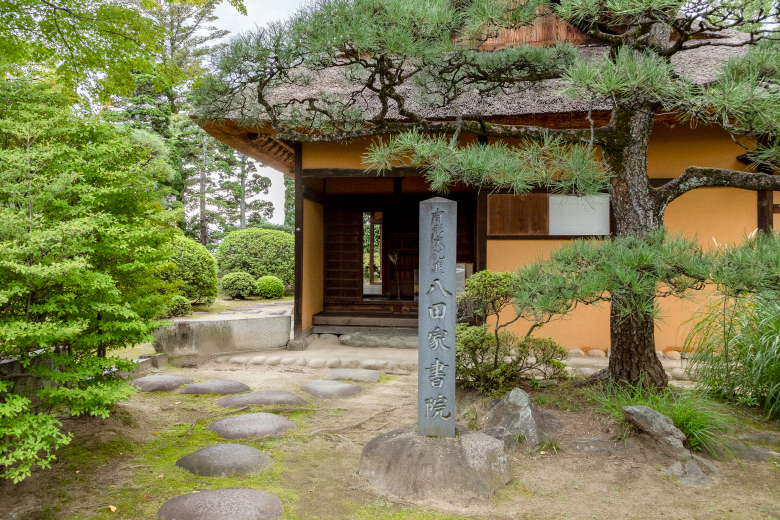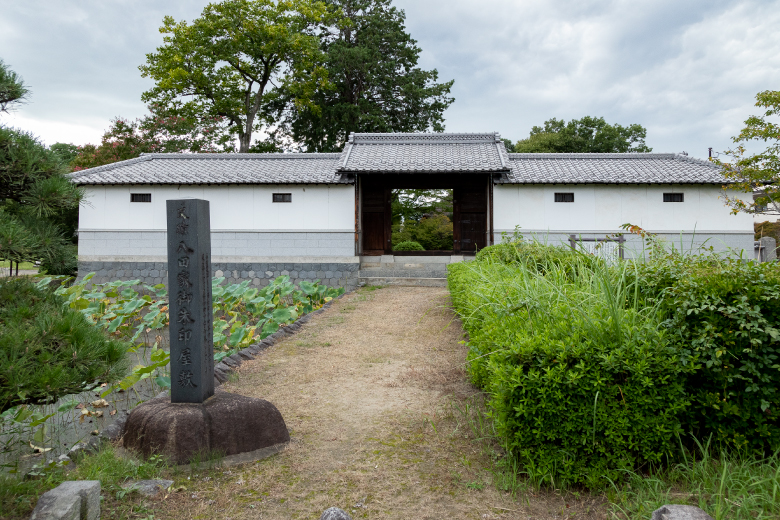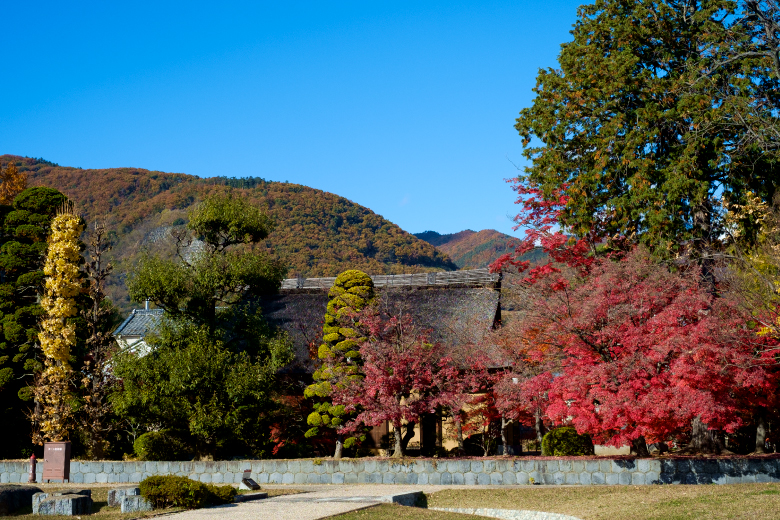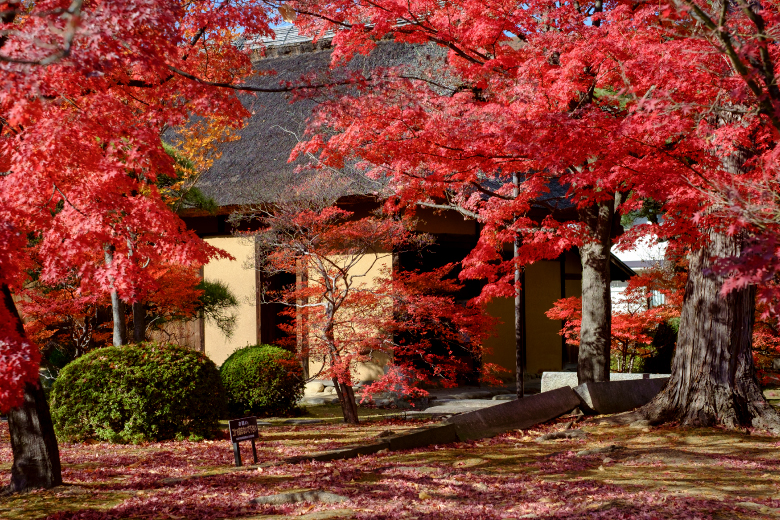The Hatta Clan served as the Kuramae magistrate (in charge of tax collection, management, and transport) for the Takeda Clan in the Warring States Period (1467-1603); and after the fall of the Takeda Clan, the Hatta Clan was under the protection of Tokugawa Ieyasu. They received a residence on 3400 m2 of land from Ieyasu as the temple’s property authorized by the Edo shogunate, and the Hatta Family Shoin (drawing room) was built on the land in 1601.
The area was frequently damaged by floods, and the Hatta Family residence was often damaged as well. After a flood in 1859 made the main building unusable, the Shoin (drawing room) was extended and remodeled for use as the residence.
On the inside of the thatched roof, chamfered posts cut from Japanese hemlock were used, which shows a simple but a popular style seen in the early Edo Period (1603-1868). It is designated a cultural property of Yamanashi Prefecture.
In 1993, Hatta Goshuin Park was built next to the Shoin along the theme of the history and climate of Isawa. Excavation before construction lead to the discovery of earthen walls with stones having been used in their construction, paving stones, and earthen floors. These may be the ruins of a water mill and stable.
Beautiful autumn foliage between late October and late November is well known. In spring, hina dolls (displayed on girls’ day in Japan) made between the Edo Period (1603-1868) and Show Period (1926-1989) and owned by the Hatta Family are displayed every year.
The area was frequently damaged by floods, and the Hatta Family residence was often damaged as well. After a flood in 1859 made the main building unusable, the Shoin (drawing room) was extended and remodeled for use as the residence.
On the inside of the thatched roof, chamfered posts cut from Japanese hemlock were used, which shows a simple but a popular style seen in the early Edo Period (1603-1868). It is designated a cultural property of Yamanashi Prefecture.
In 1993, Hatta Goshuin Park was built next to the Shoin along the theme of the history and climate of Isawa. Excavation before construction lead to the discovery of earthen walls with stones having been used in their construction, paving stones, and earthen floors. These may be the ruins of a water mill and stable.
Beautiful autumn foliage between late October and late November is well known. In spring, hina dolls (displayed on girls’ day in Japan) made between the Edo Period (1603-1868) and Show Period (1926-1989) and owned by the Hatta Family are displayed every year.



